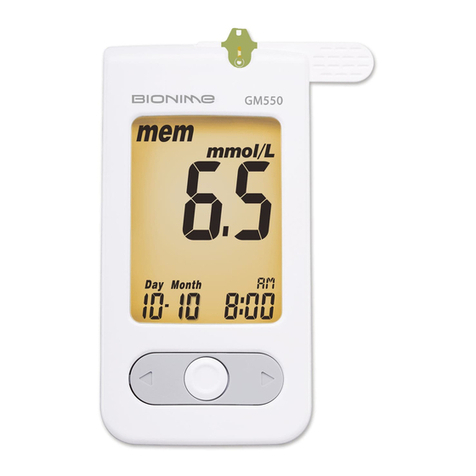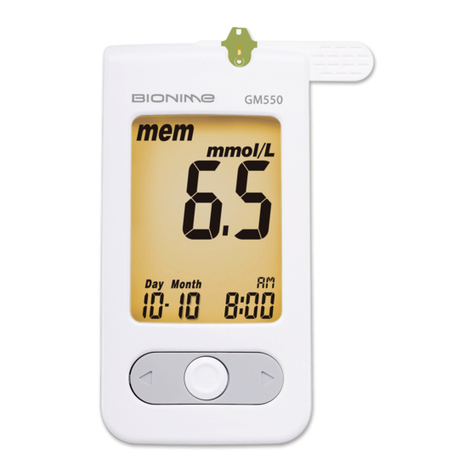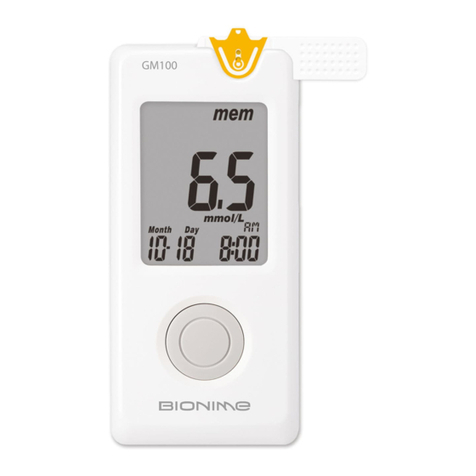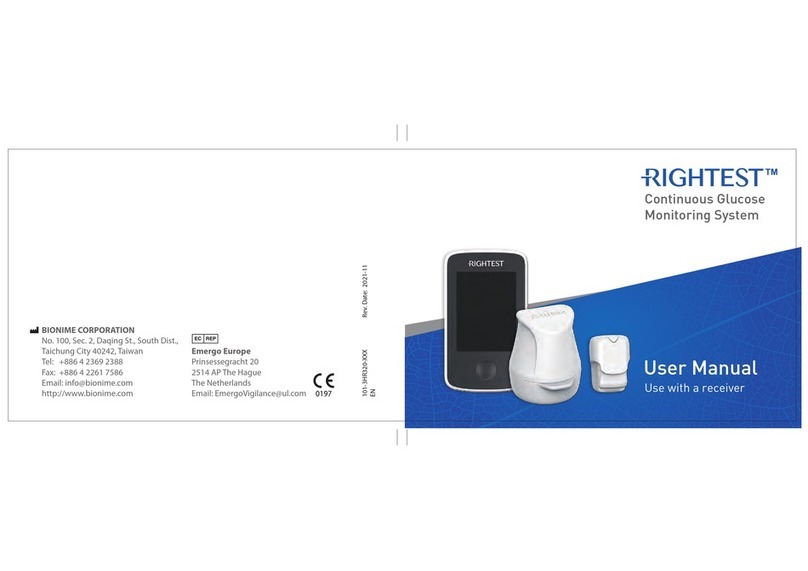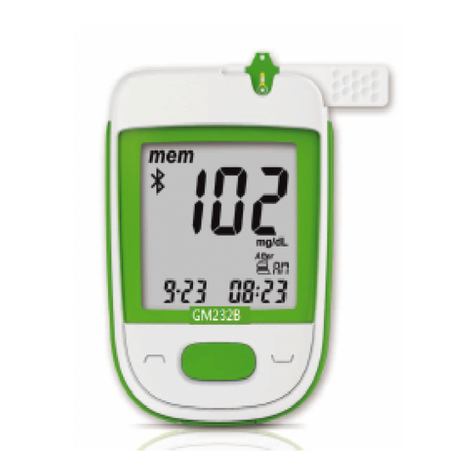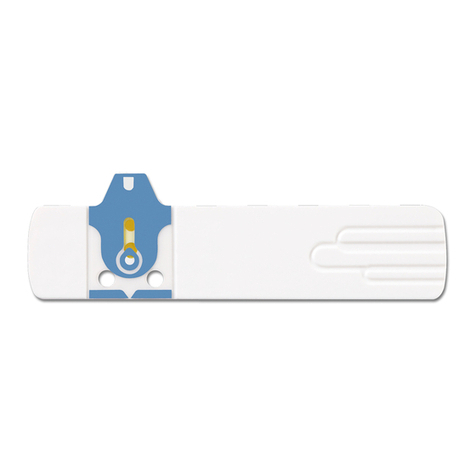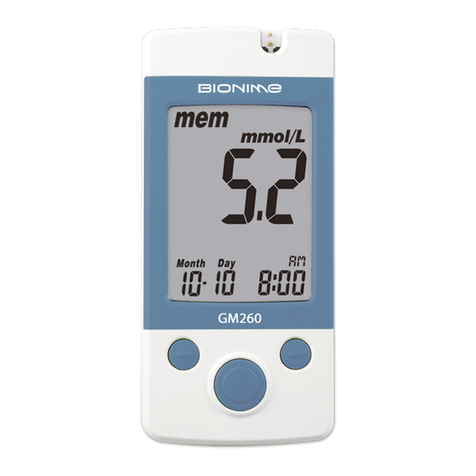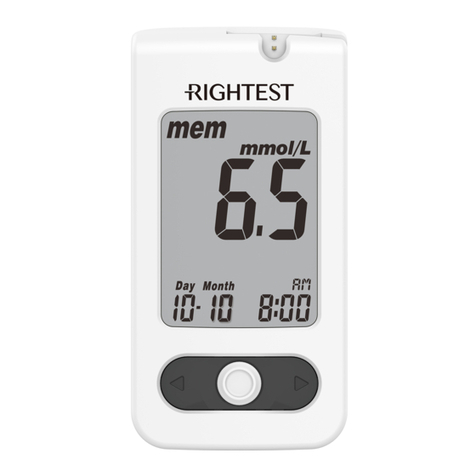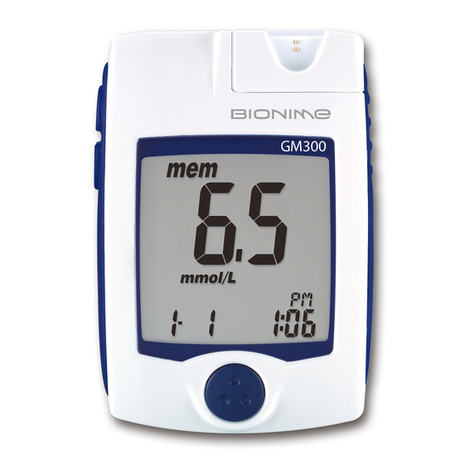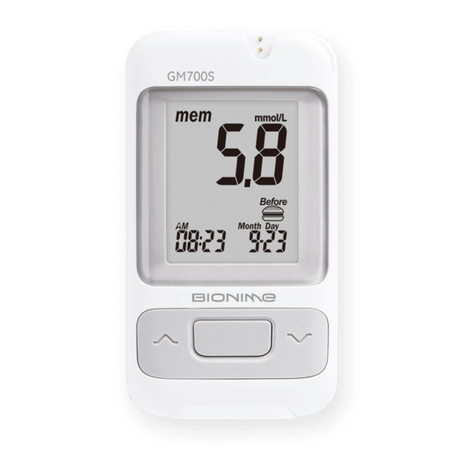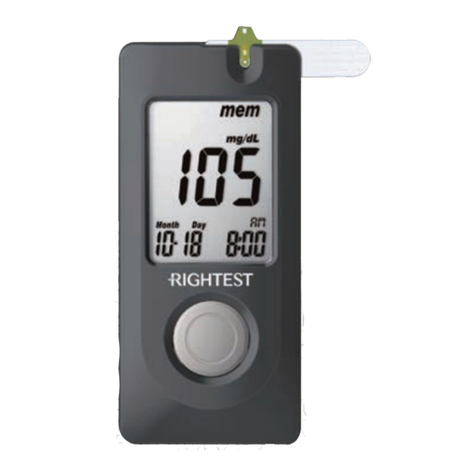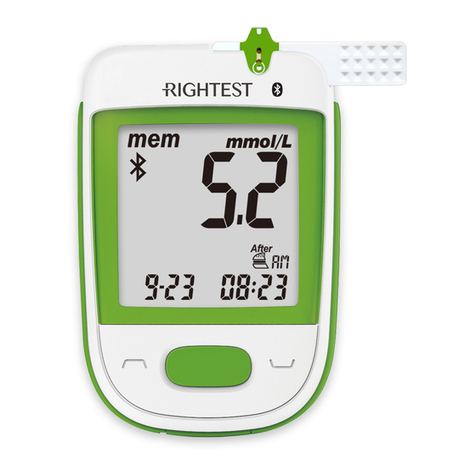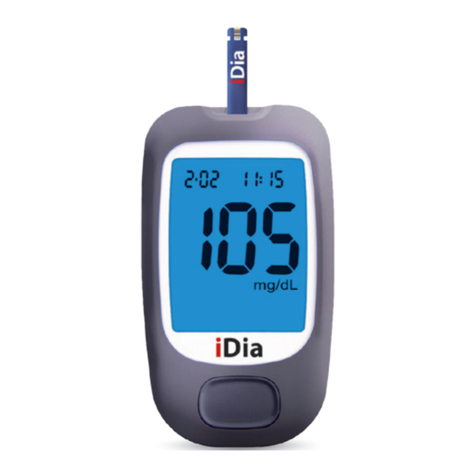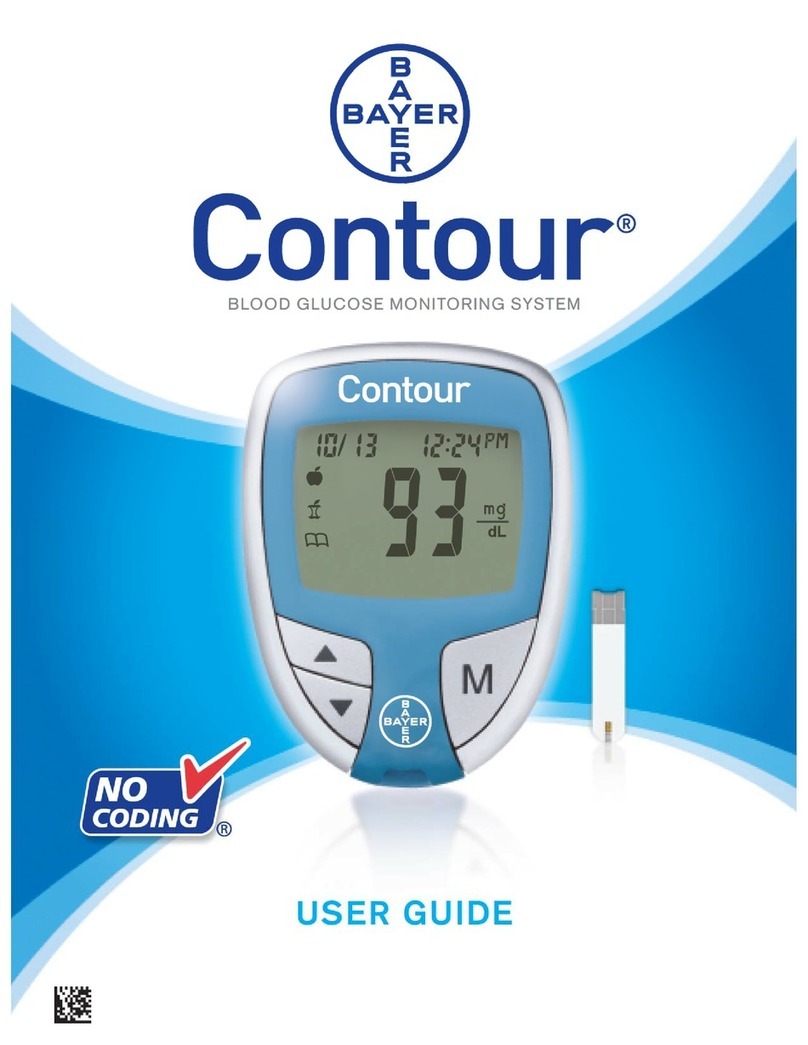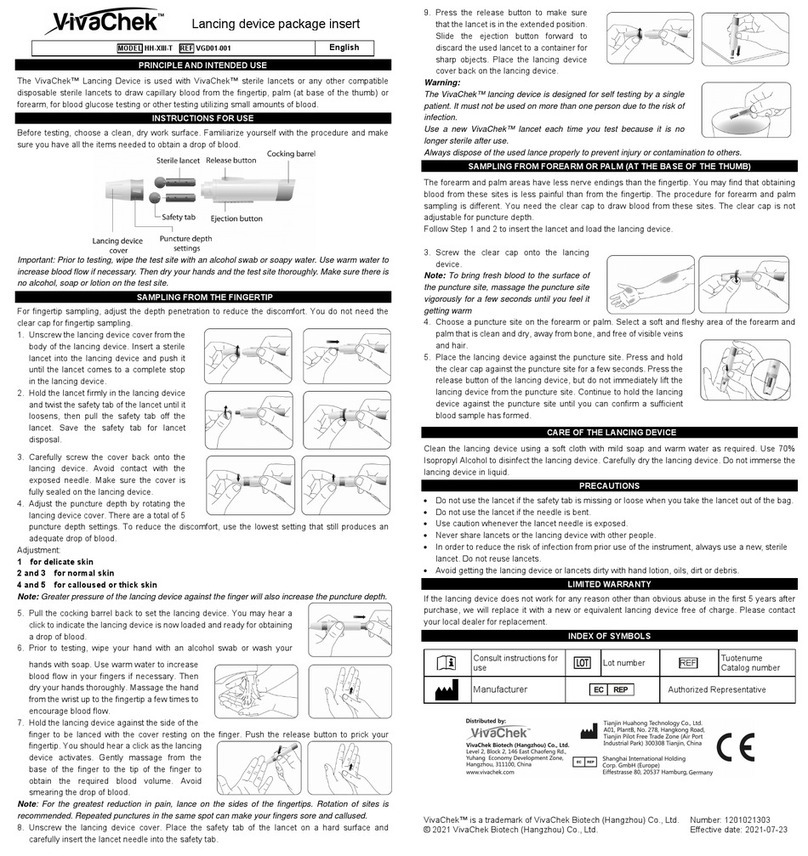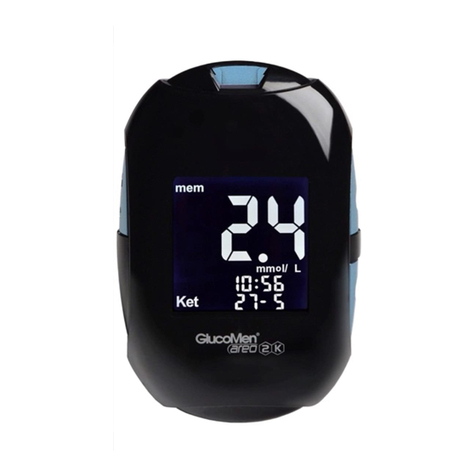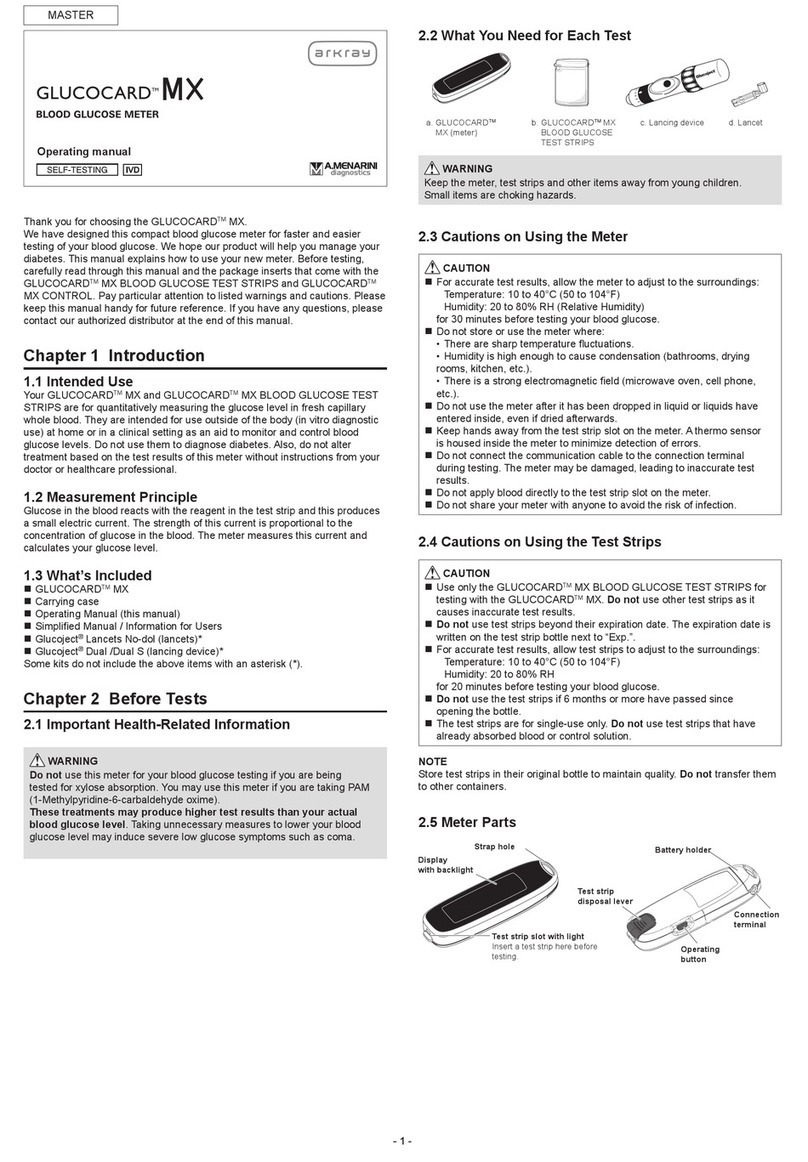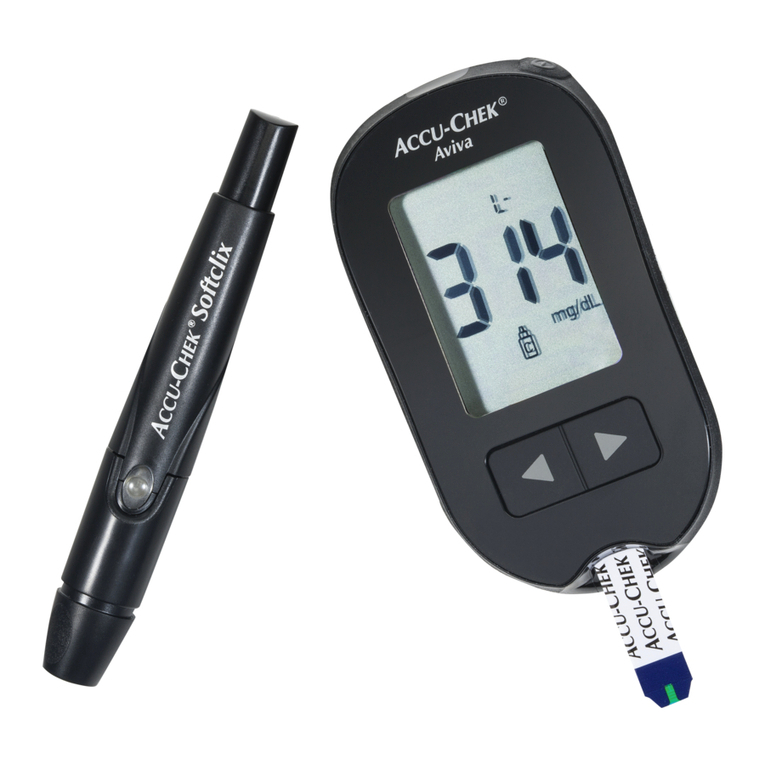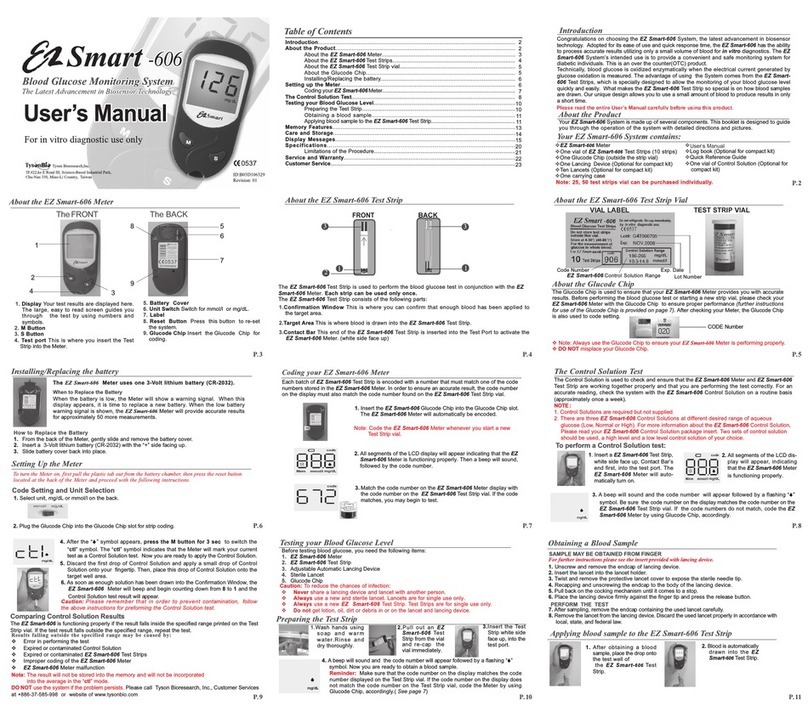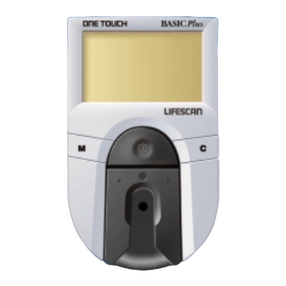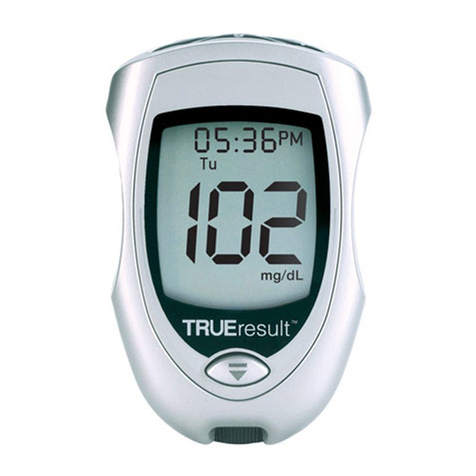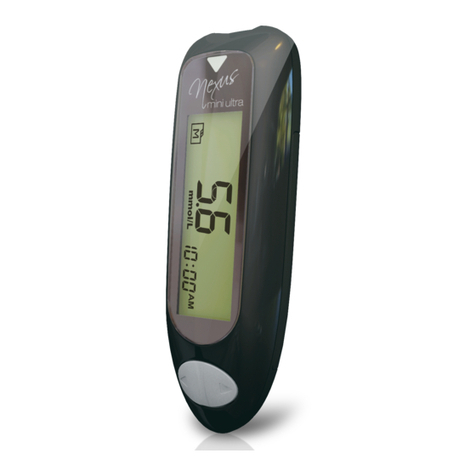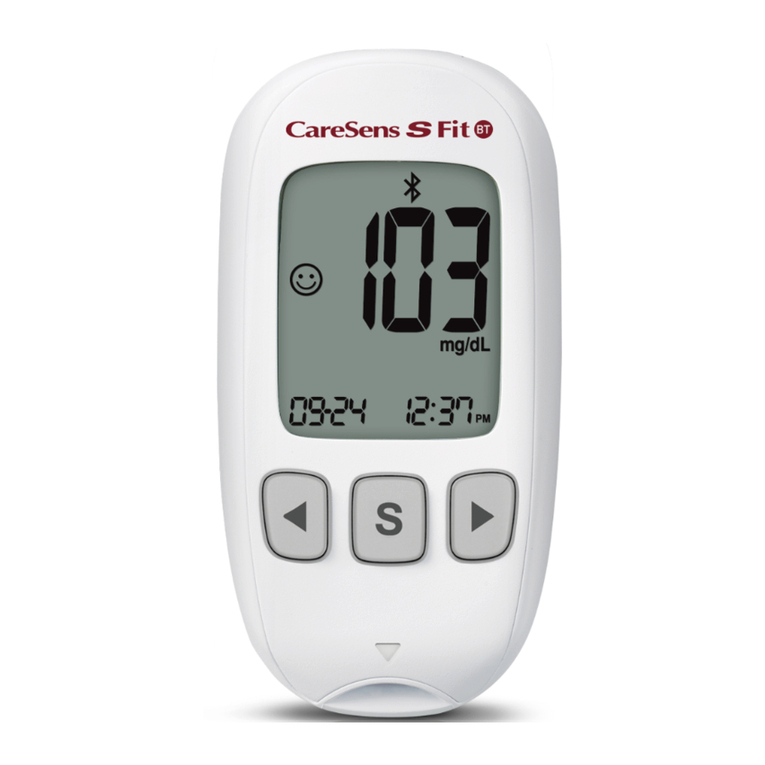
Intended Use
The RIGHTEST ELSA Blood Glucose Monitoring System is designed for in vitro diagnostic (for testing
outside the body) use only and can be used by home user and healthcare professional.
The system can test glucose concentration in fresh capillary whole blood (drawn from fingertip, palm
and forearm).
The glucose result displayed is calibrated into the plasma glucose testing equivalent.
The system is not intended for screening or diagnoses of diabetes mellitus.
RIGHTEST ELSA Blood Glucose Test Strips are designed for use only with the RIGHTEST ELSA Blood
Glucose Meter.
Test Procedure
Preparing the Lancing Device
1) Hold the depth adjustable cap in one hand and hold the hub in the other hand. Bend the cap towards
the down side, until a gap appears between the cap and hub.
2) Pull the cap and hub off in opposite directions, remove the cap.
3) Insert a new disposable lancet into the lancet carrier. Make sure it is held securely in place.
4) Twist off and set aside the protective cover of the disposable lancet.
5) Reattach the depth adjustable cap.
6) Rotate the clear top part of the cap to adjust the depth. Check the number of lines visible in the
window. More lines corresponds to a greater depth. Try " " for soft or thin skin, " " for average
skin, or " " for thick or calloused skin.
7) Pull back the plunger until you hear a click. The device is now primed. Let go of the plunger. It will
return to its original position.
Performing a Test
1) Wash your hands with warm soapy water
and dry thoroughly.
2) Take one test strip from the vial. Re-cap
the vial cap immediately.
3) Insert the strip into the test strip port of the
meter.
Test Result
- Blood glucose test results are shown on the meter in mg/dL or mmol/L, depending on the preset of
your meter.
- If your blood glucose result is unusually high or low and you have doubts about the accuracy, repeat
the test with a new test strip. You can also run a Quality Control Test with the RIGHTEST Control
Solution GC570 to check your meter and test strip. If the test result still remains unusually high or low,
contact your healthcare professional immediately.
- If you are experiencing symptoms that are not consistent with your blood glucose test results and you
have followed all the instructions in this manual, contact your healthcare professional immediately.
- The RIGHTEST ELSA Meter displays results between 10 and 600 mg/dL or 0.6 and 33.3 mmol/L. If
your test result is below 10 mg/dL (0.6 mmol/L) , " Lo " will appear on the screen. Please repeat the test
with a new strip. If " Lo " still appears, contact your healthcare professional immediately.
- If your test result is above 600 mg/dL (33.3 mmol/L), " Hi " will appear on the screen. Please repeat the
test with a new strip. If " Hi " still appears, contact your healthcare professional.
Limitations
- The meter readings of the blood glucose may be significantly lower than " true glucose levels " in the
hyperglycemic-hyperosmolar state, with or without ketosis. Critically ill patients should not be tested by
the RIGHTEST System, or tested with extreme caution.
- Caution is advised in interpreting glucose values below 50 mg/dL (2.8 mmol/L) or above 250 mg/dL
(13.9 mmol/L). Consult a healthcare professional as soon as possible if these values are obtained.
- Healthcare professionals should occasionally check their glucose testing technique and the technique
of their patients. It is recommended to compare the meter result with a laboratory result acquired using
the same blood sample. A well characterized clinical laboratory method using hexokinase or glucose
oxidase should be used as the comparative method.
- Flouoride should not be used as a preservative when collecting blood glucose samples.
- Hands and fingers contaminated with sugar from foods or beverages may cause falsely high results.
- Storage of strips near bleach as well as bleach containing products will affect the results of RIGHTEST
Test Strips.
- RIGHTEST Blood Glucose Test Strips are designed for use with capillary whole blood samples.
Do not use serum or plasma samples.
- Incorrect test results may be obtained at high altitudes of more than approximately 3,048 meters
(10,000 feet) above sea level.
- Severe dehydration and excessive water loss may cause inaccurately low results.
- RIGHTEST Blood Glucose Monitoring System has not been validated for use on neonates. DO NOT
use it test for neonates.
Precautions
- Check the expiration date printed on the strip vial. Do not use expired test strips.
- Close the vial cap immediately after taking a test strip out of the vial.
- Do not perform quality control tests with expired control solution.
- Do not bend or twist the test strip. Damaged test strips may give incorrect results.
- Do not reuse test strips and lancets.
- Discard the used disposable lancet and strip into an appropriate sharps biohazard container.
- If the RIGHTEST Meter and Test Strips are exposed to temperature environments outside the operating
range of 10 - 40°C (50 - 104°F), wait at least 30 minutes before testing.
- To purchase new control solutions, please contact your authorized Bionime representative.
1
4) The drop symbol will flash continuously. This signifies that a blood sample should be applied within 2
minutes.
5) Place the lancing device against the pad of your fingertip and press the release button.
9) Remove the cap from the lancing device. Do not touched the
used lancet. Press the lancet tip into the protective cover.
Hold down the release button and pull back the plunger to
eject the lancet. Discard the lancet into a suitable sharps
biohazard container.
Warning
- Keep the test strips and vial cap away from children. They may cause a choking hazard. If a test strip
or vial cap is swallowed, contact a healthcare professional immediately.
0.75 1.0 3μL μL 1.5 μL 2.0 μL .0 μLUse a minimum blood sample volume of 0.75 μL for
blood glucose testing. Samples larger than 3.0 μL
may contaminate the meter.
Sample Size Example
For more information on how to use your meter and lancing device and how to understand your
test results, see the User's Manual.
6) Touch and hold the blood droplet to the test strip sample entry port until you hear a " beep " and the
Viewing Window is filled with blood. If the Viewing Window is not completely filled with blood or the
test does not start, please discard the test strip and repeat the test with a new test strip.
7) You will see a countdown on the screen. After 5 seconds, the test result will appear.
8) Remove the test strip from the meter. Please follow local regulations and discard the used strip
properly.
2
4
5
7
8
(1)
Expected values
GLUCOSE LEVEL
70 to 99 mg/dL (3.9 to 5.5 mmol/L)
100 to 125 mg/dL (5.6 to 6.9 mmol/L)
126 mg/dL (7.0 mmol/L) and above on more than one testing occasion
INDICATION
Normal fasting glucose
Pre-diabetes (Impaired fasting glucose)
Diabetes
Fasting Blood Glucose
3
6a 6b 6c
ELSA BLOOD GLUCOSE TEST STRIP INSERT
7654
32
1
Alternative site testing - palm or forearm blood sampling
- To perform a test using samples obtained from alternative sites, install the
clear cap on the lancing device. (For more information on how to install,
see the Instructions for the Lancing Device.)
- Massage the target area on the palm or forearm for a few seconds to
increase blood flow.
- Immediately after massaging, press and hold the lancing device against the
target area.
- Press the release button.
- After pressing the release button continue holding the lancing device
against the skin. Gradually push the device against your skin with
increasing pressure until the blood droplet is of sufficient size.
Palm
Forearm
Rotate
Push the
release button
Pressing for
a few seconds


